Abstract
Results of a double-blind randomized non-crossover study of rapid (45 min) versus slow (4 h) infusion of amphotericin B administered to 20 patients with proven or suspected fungal infection are reported. Toxicity was higher in the rapid infusion group than it was in the slow infusion group (mean total 7-day chill score, 173 +/- 276 versus 20 +/- 30 [P less than 0.01]; mean total 7-day dosage of meperidine required to abate rigors, 180 +/- 133 versus 58 +/- 78 mg [P less than 0.05]; and mean maximum total 7-day pulse rise, 225 +/- 64 versus 135 +/- 56 beats per min [P less than 0.02], respectively). When analyzed on a daily basis, the mean chill score, meperidine dosage, and pulse rise were also higher; and in addition, nausea and vomiting (5 of 11 patients who received a rapid infusion versus 0 of 9 patients who received a slow infusion [P less than 0.01]) appeared to be more common in those who received amphotericin B rapidly. The daily analysis approach proved that tolerance to these side effects developed with each subsequent infusion day, and by day 7 the incidence and severity were the same. This development of tolerance was significant for the mean chill score in the rapid infusion group (P less than 0.05) and for the proportion of patients with chills (P less than 0.005 for the slow infusion group; P less than 0.05 for the rapid infusion group). A decrease in creatinine clearance to greater than 51% of the baseline value was seen in two patients in each group. There were five deaths (four in the rapid infusion group, 1 in the slow infusion group) within 1 month, but none was clearly related to the amphotericin B infusion. The mean time to defervescence was similar for each group (10.8 +/- 4.1 days in the slow infusion group versus 9.9 +/- 5 days in the rapid infusion group). A rapid infusion regimen for amphotericin B cannot be recommended, at least during the first 5 to 7 days of treatment.
Full text
PDF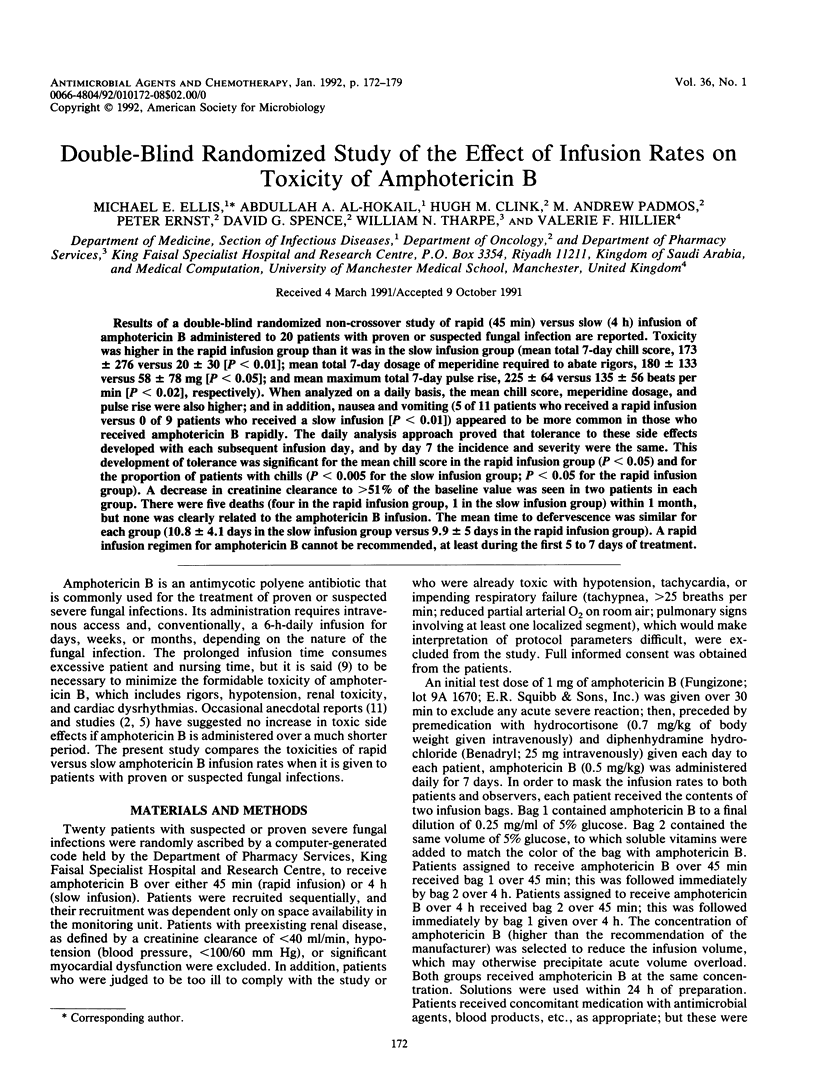
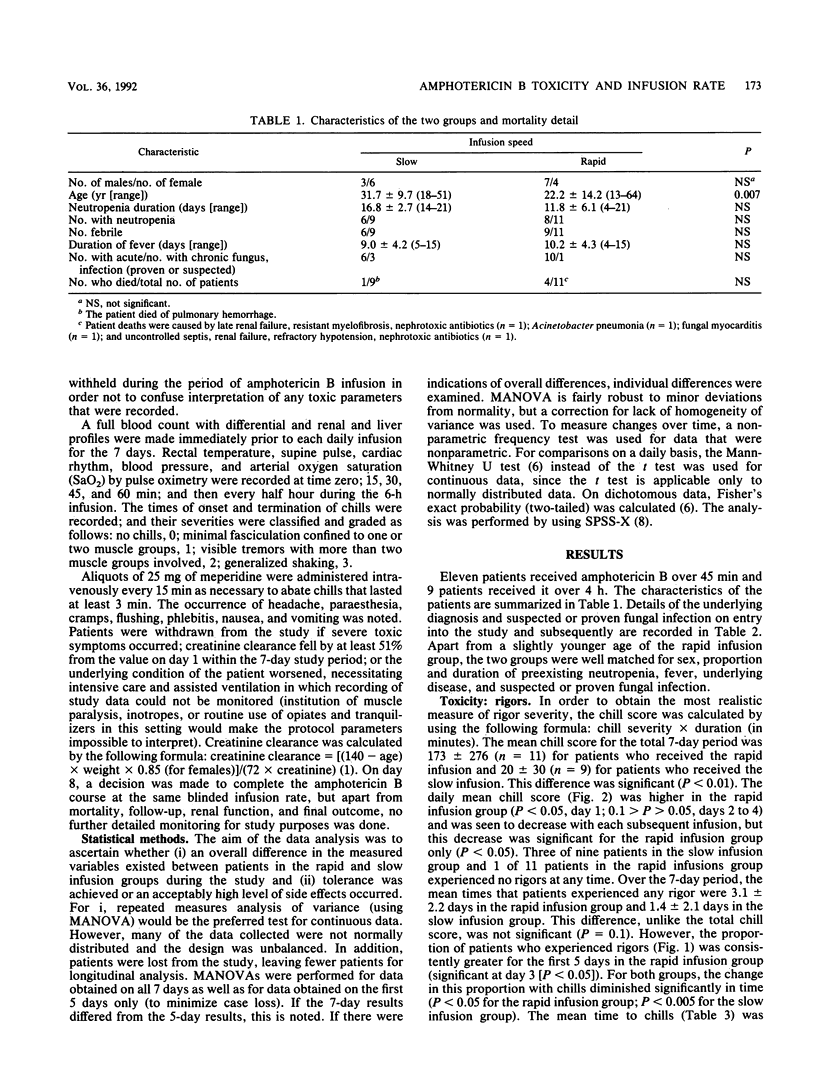
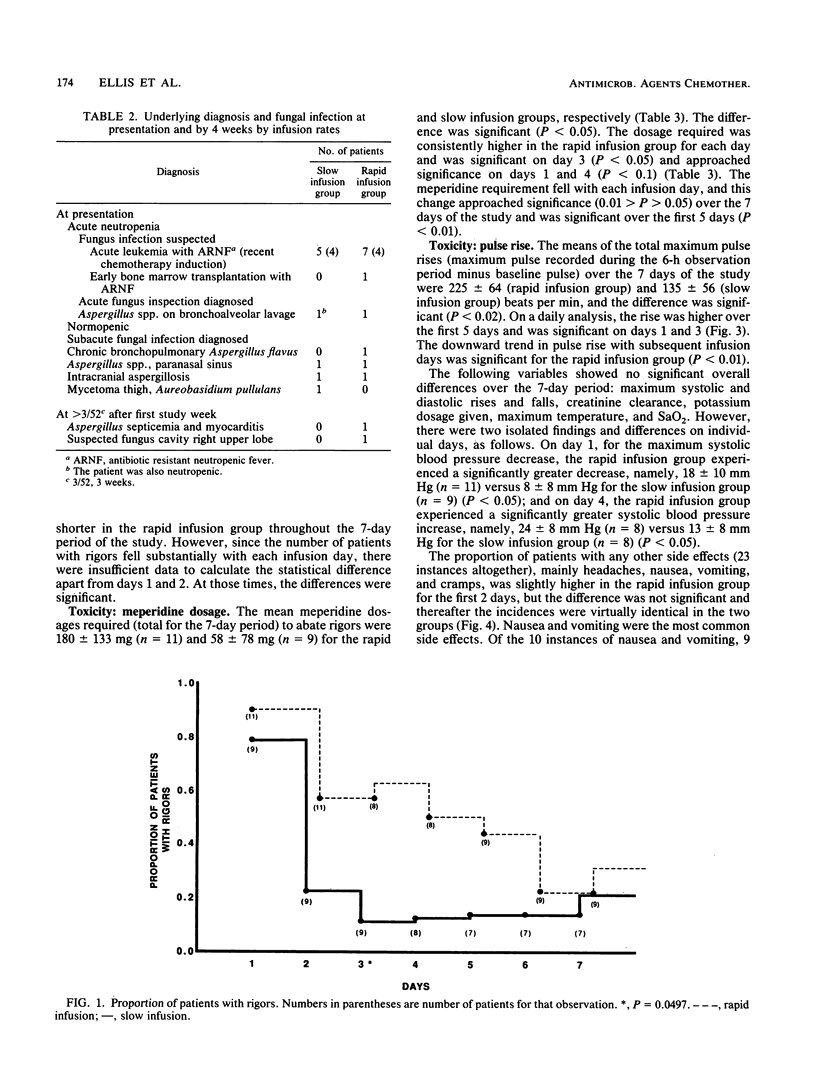
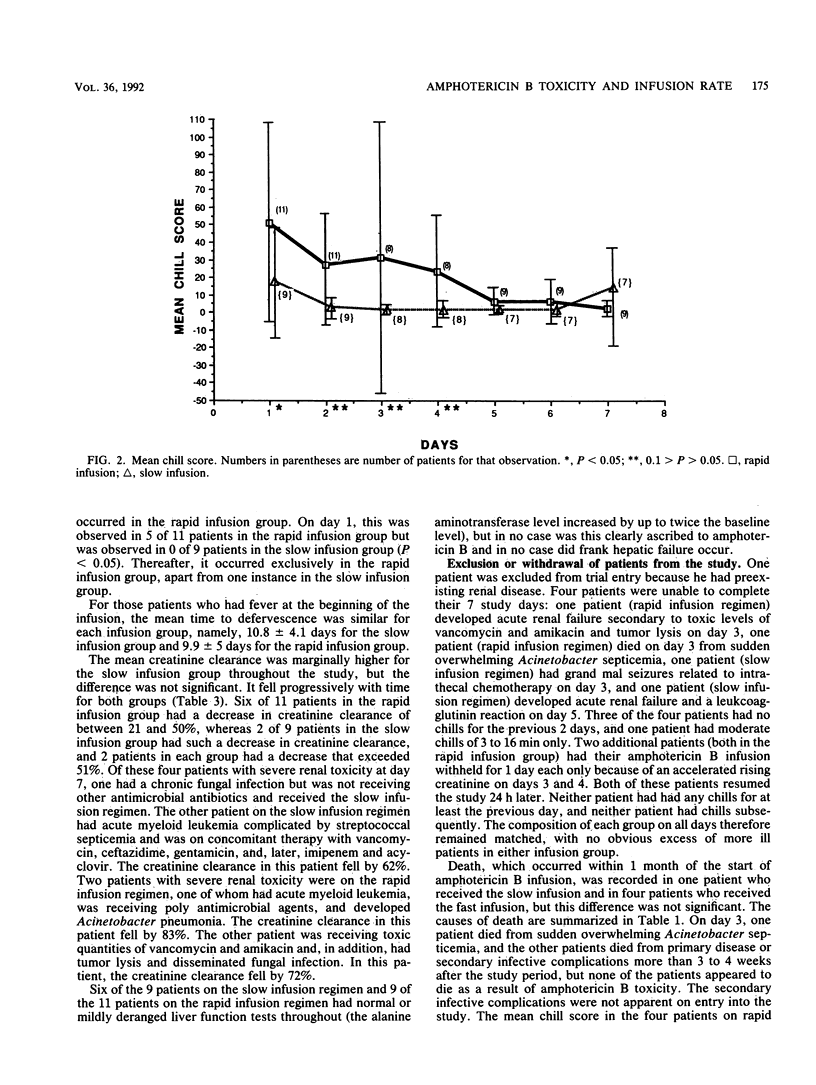
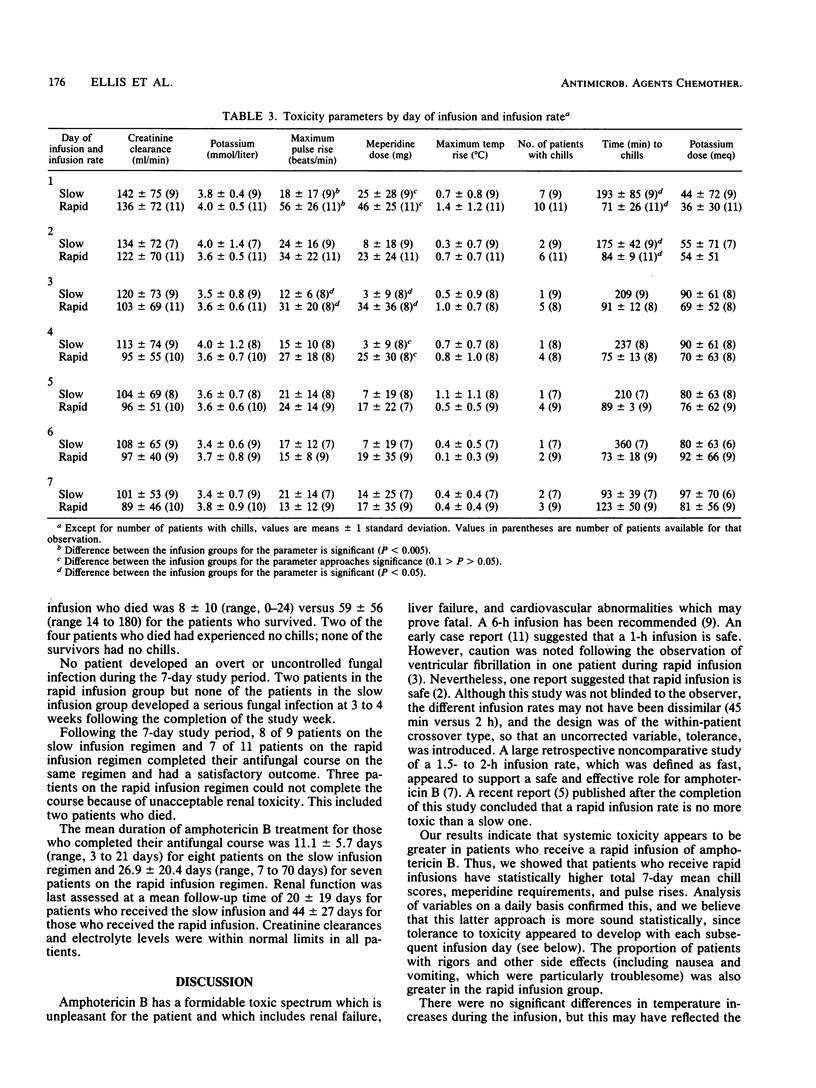
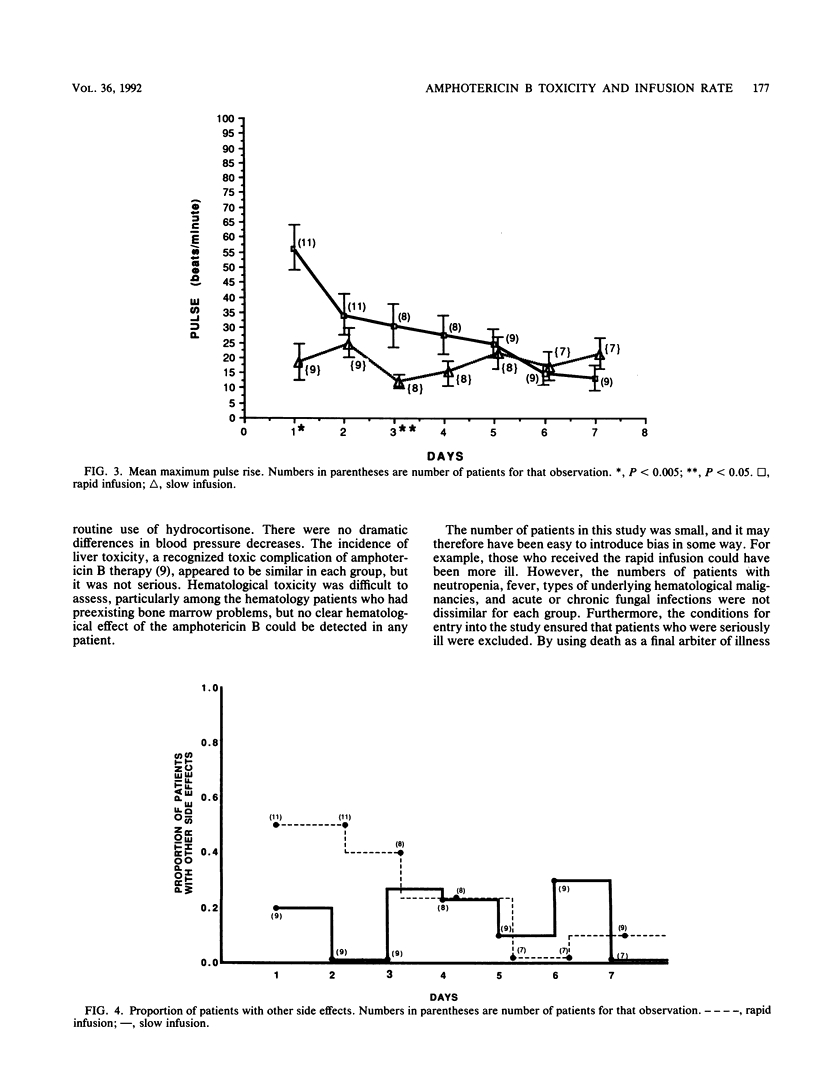
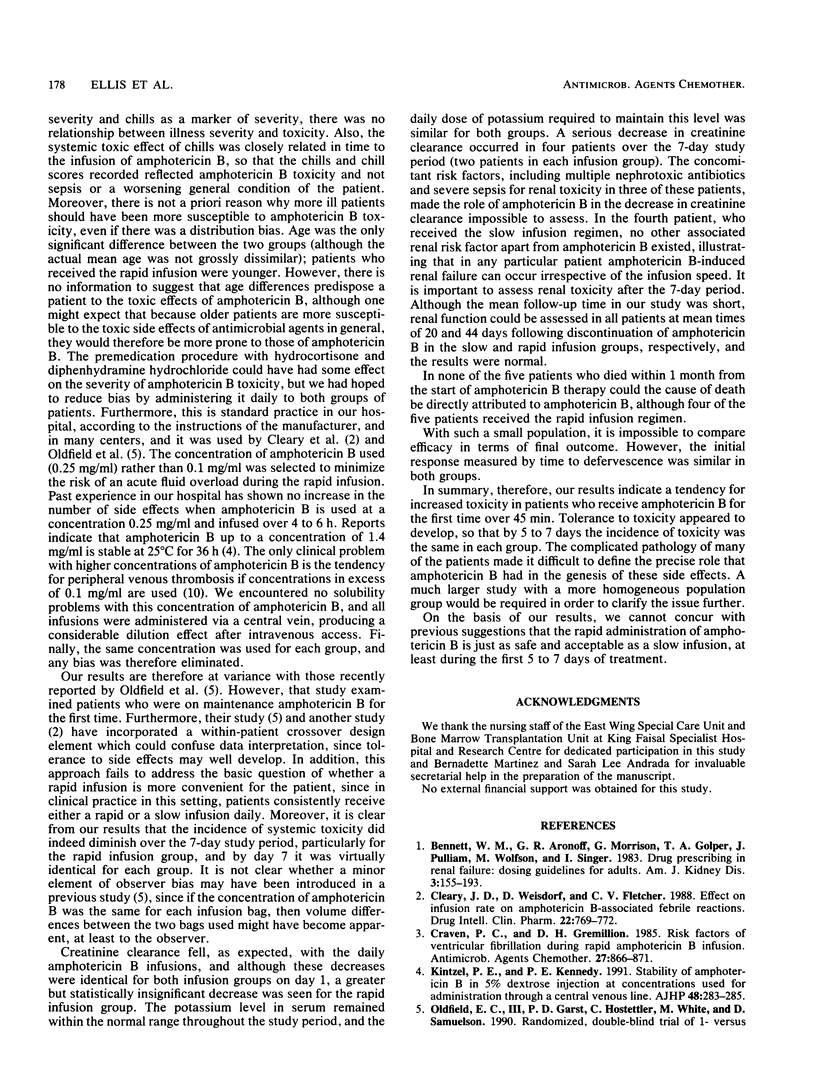
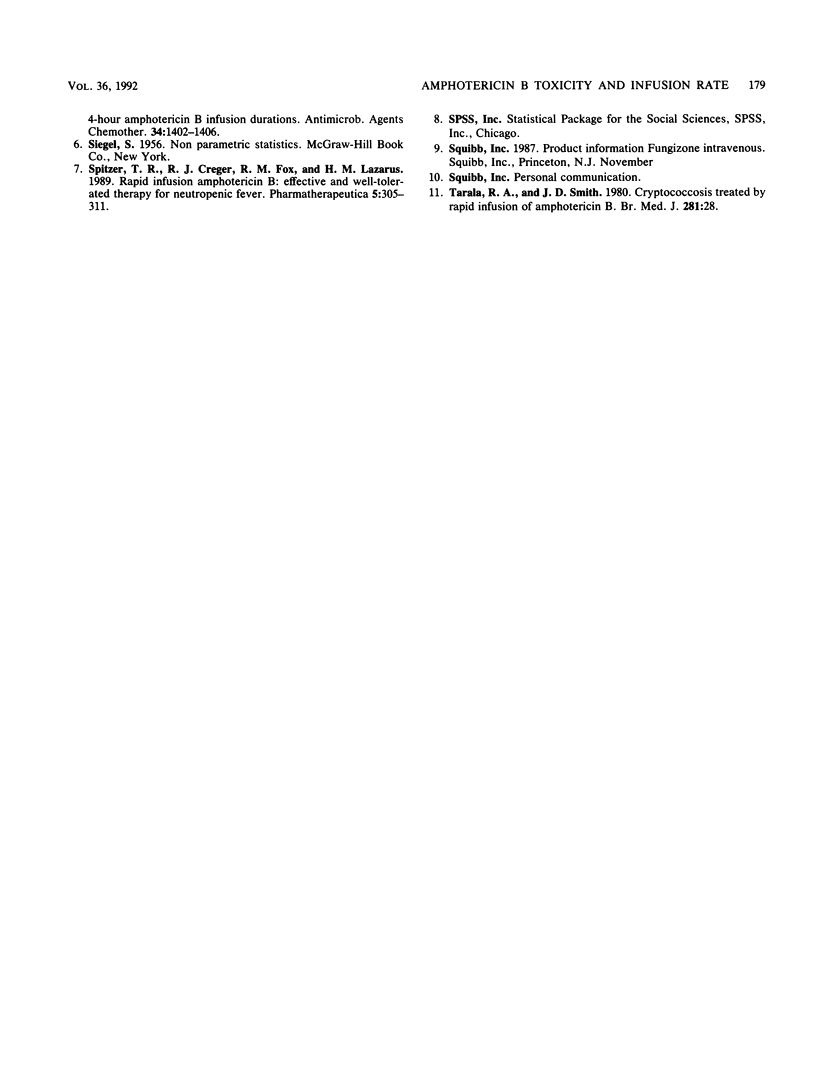
Selected References
These references are in PubMed. This may not be the complete list of references from this article.
- Bennett W. M., Aronoff G. R., Morrison G., Golper T. A., Pulliam J., Wolfson M., Singer I. Drug prescribing in renal failure: dosing guidelines for adults. Am J Kidney Dis. 1983 Nov;3(3):155–193. doi: 10.1016/s0272-6386(83)80060-2. [DOI] [PubMed] [Google Scholar]
- Cleary J. D., Weisdorf D., Fletcher C. V. Effect of infusion rate on amphotericin B-associated febrile reactions. Drug Intell Clin Pharm. 1988 Oct;22(10):769–772. doi: 10.1177/106002808802201005. [DOI] [PubMed] [Google Scholar]
- Craven P. C., Gremillion D. H. Risk factors of ventricular fibrillation during rapid amphotericin B infusion. Antimicrob Agents Chemother. 1985 May;27(5):868–871. doi: 10.1128/aac.27.5.868. [DOI] [PMC free article] [PubMed] [Google Scholar]
- Kintzel P. E., Kennedy P. E. Stability of amphotericin B in 5% dextrose injection at concentrations used for administration through a central venous line. Am J Hosp Pharm. 1991 Feb;48(2):283–285. [PubMed] [Google Scholar]
- Oldfield E. C., 3rd, Garst P. D., Hostettler C., White M., Samuelson D. Randomized, double-blind trial of 1- versus 4-hour amphotericin B infusion durations. Antimicrob Agents Chemother. 1990 Jul;34(7):1402–1406. doi: 10.1128/aac.34.7.1402. [DOI] [PMC free article] [PubMed] [Google Scholar]
- Spitzer T. R., Creger R. J., Fox R. M., Lazarus H. M. Rapid infusion amphotericin B: effective and well-tolerated therapy for neutropenic fever. Pharmatherapeutica. 1989;5(5):305–311. [PubMed] [Google Scholar]
- Tarala R. A., Smith J. D. CKryptococcosis treated by rapid infusion of amphotericin B. Br Med J. 1980 Jul 5;281(6232):28–28. doi: 10.1136/bmj.281.6232.28. [DOI] [PMC free article] [PubMed] [Google Scholar]


